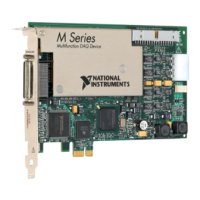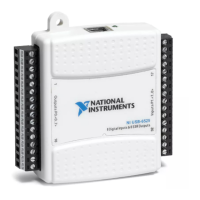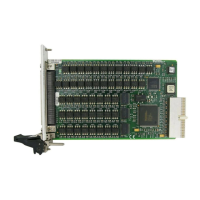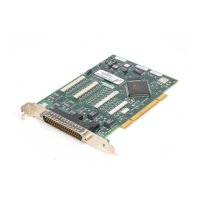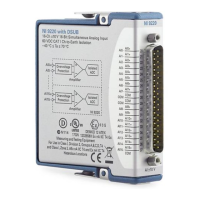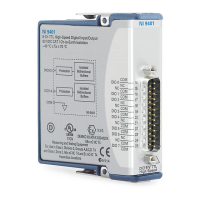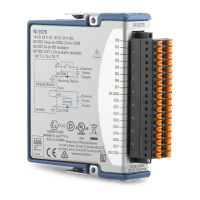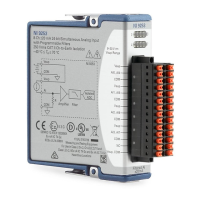4-2 | ni.com
Chapter 4 Analog Input
• A/D Converter—The analog-to-digital converter (ADC) digitizes the AI signal by
converting the analog voltage into a digital number.
• AI FIFO—M Series devices can perform both single and multiple A/D conversions of a
fixed or infinite number of samples. A large first-in-first-out (FIFO) buffer holds data
during AI acquisitions to ensure that no data is lost. M Series devices can handle multiple
A/D conversion operations with DMA, interrupts, or programmed I/O.
Analog Input Range
Input range refers to the set of input voltages that an analog input channel can digitize with the
specified accuracy. The NI-PGIA amplifies or attenuates the AI signal depending on the input
range. You can individually program the input range of each AI channel on your M Series
device.
The input range affects the resolution of the M Series device for an AI channel. Resolution refers
to the voltage of one ADC code. For example, a 16-bit ADC converts analog inputs into one of
65,536 (= 2
16
) codes—that is, one of 65,536 possible digital values. These values are spread
fairly evenly across the input range. So, for an input range of -10 V to 10 V, the voltage of each
code of a 16-bit ADC is:
M Series devices use a calibration method that requires some codes (typically about 5% of the
codes) to lie outside of the specified range. This calibration method improves absolute accuracy,
but it increases the nominal resolution of input ranges by about 5% over what the formula shown
above would indicate.
Choose an input range that matches the expected input range of your signal. A large input range
can accommodate a large signal variation, but reduces the voltage resolution. Choosing a smaller
input range improves the voltage resolution, but may result in the input signal going out of range.
For more information about setting ranges, refer to the NI-DAQmx Help or the LabVIEW Help.
10V 10V–()–
2
16
----------------------------------- 305μV=
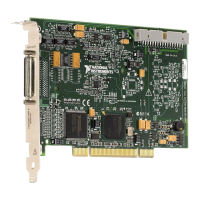
